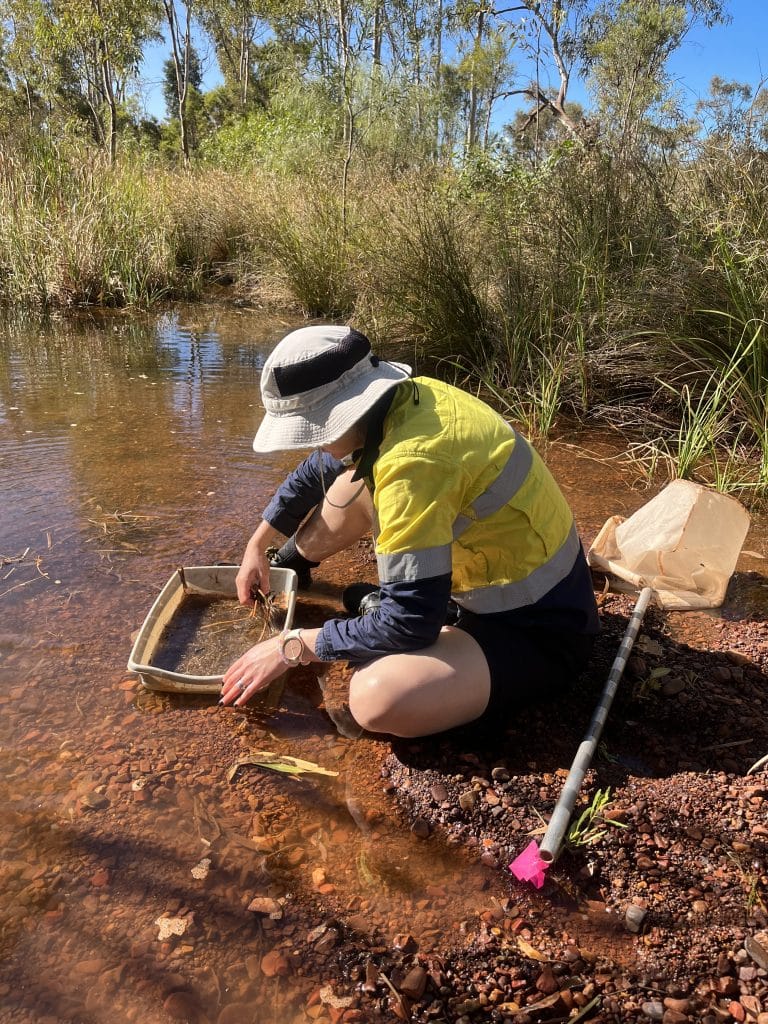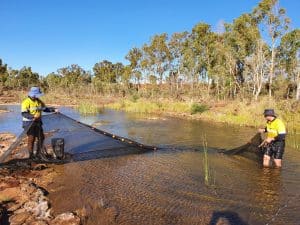More than 200 people converged on Walpole at the end of September, with one common goal – to capture a snapshot of the plant and animal life hidden in the nooks and crannies of the Walpole Wilderness Area, the only gazetted wilderness in Western Australia.
2022 has been another busy and successful year for Biologic’s aquatic team. We have studied some of the most remarkable aquatic ecosystems Western Australia has to offer. In the Pilbara region, where the resources sector continues to grow, we completed several large-scale baseline and monitoring surveys of rivers and springs, collecting valuable information on the region’s water quality, aquatic flora, hyporheic fauna, macroinvertebrate and fish communities. We’ve also worked closely with our Flora team to complete several surveys of groundwater dependent ecosystems (GDE) – some of the most important and fragile ecosystems in the arid landscape of the Pilbara.
We also conducted several baseline aquatic ecosystem surveys in the south-west of the state. One of the most fascinating was investigating the macroinvertebrate and fish communities within farm dams. As the climate becomes hotter and drier, and rivers and wetlands become less reliable habitats, farm dams are becoming increasingly important refugia for aquatic fauna and flora. Our team also undertook many surveys searching for the Vulnerable Carter’s freshwater mussel within the Perth metropolitan region this year. Interestingly, a recent study by other researchers found that there are at least two species of freshwater mussel in the south-west of Western Australia. This new discovery adds even greater importance to these targeted surveys, as the distribution for each species is now known to be more restricted than first thought. Definitely a space to watch in 2023.
Between the rivers and wetlands of the Pilbara and the south-west, we also had the opportunity to sample a variety of salt lakes, including a beautiful coastal lake north of Perth teeming with algae, invertebrates and shorebirds, and a vast (and very dry) salt lake in the Goldfields. We revealed the aquatic invertebrate assemblages of the Goldfields salt lake by running hatching trials in the Biologic laboratory. To survive in these environments, the buried eggs of invertebrate fauna lie dormant, awaiting the right conditions to emerge and thrive. That means water, and lots of it.
Speaking of the laboratory, our team of expert taxonomists have continued to excel in 2022. We have the ability to identify, to species level aquatic invertebrates from all major groups, including microcrustaceans (copepods, Cladocera and ostracods) and stygal crustaceans (amphipods, isopods and syncarids). And if the scientific literature or specimen immaturity does not allow for species-level identifications, then our in-house molecular systematics team have been on-hand to help solve our taxonomic conundrums. Working together, our taxonomists and geneticists have uncovered dozens of taxa in 2022 that are likely new to science, restricted in distribution, or both. Such knowledge is crucial for our collective understanding of the environment and our impact on it.
After such a bumper year, we’re super excited for what 2023 holds – so with all that said, Merry Fishmas from Biologic’s aquatic ecology team!












